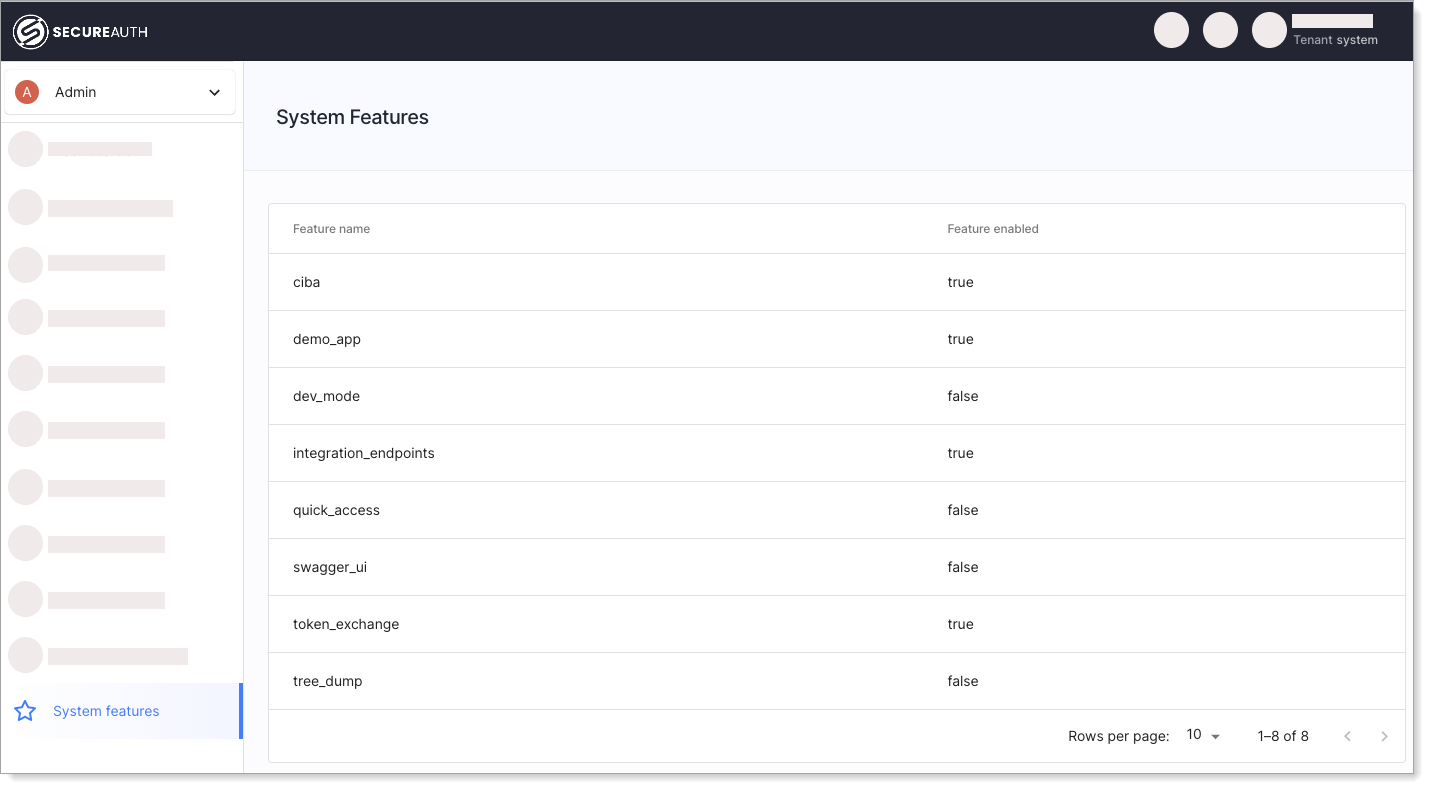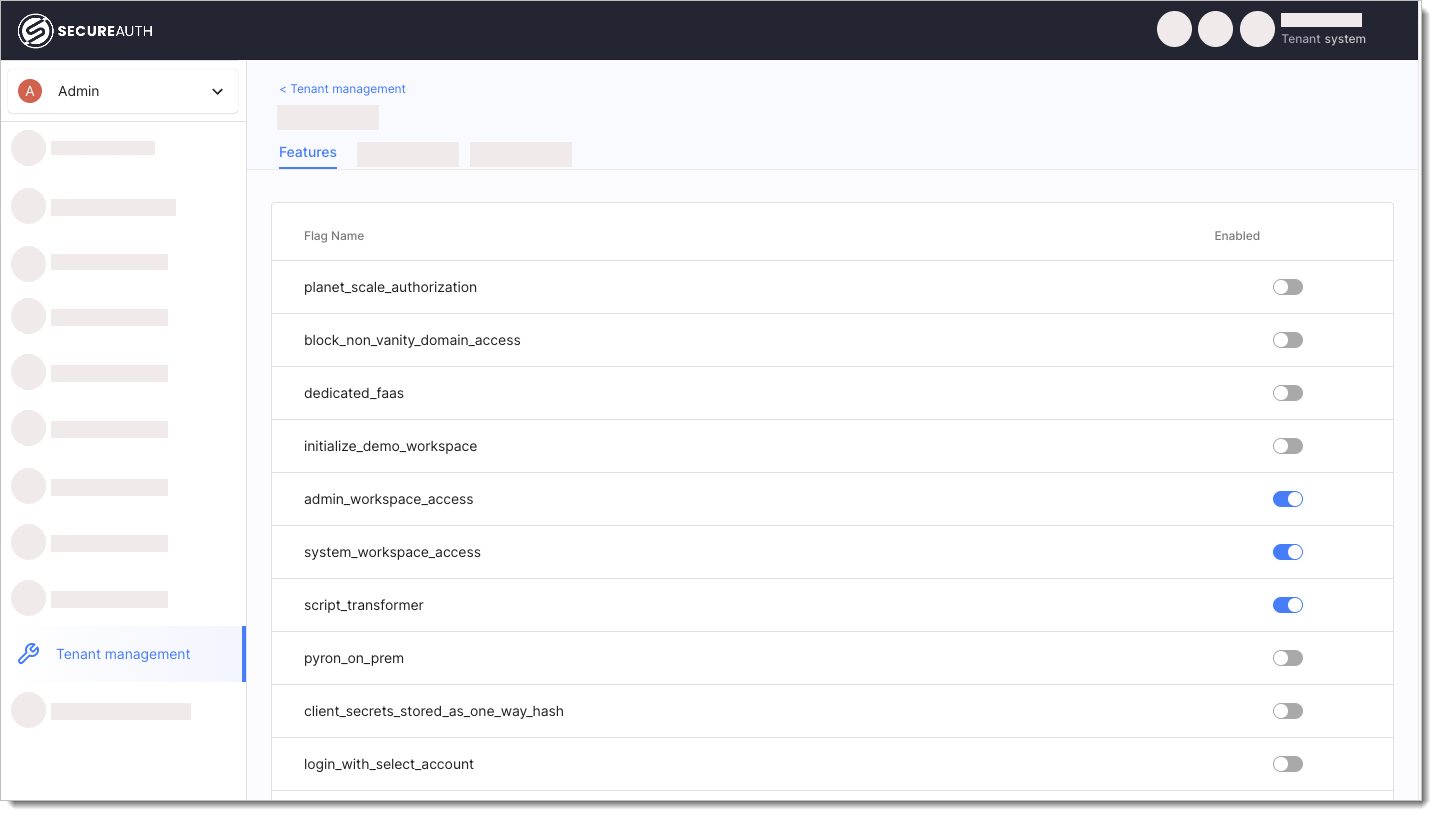Configuring SecureAuth Platform
The SecureAuth platform can be configured with various options to adjust the platform settings to match the business needs.
About Configuring SecureAuth Platform
Any of the reference options can be used in Helm Charts. SecureAuth provides an easy way to provide required parameters via dedicated keys as well as optional ones via the custom config. For secrets, there is a special secret config which could be used to store passwords.
To learn about every available setting, see SecureAuth Configuration Reference.
Required parameters
Those parameters are required for SecureAuth to start succesfully. For datastores, any key from the reference configuration can be provided.
Server URL is a public address on which SecureAuth listens for incoming requests
serverURL: "https://acp.example.com:8443"
SQL database
sql: type: "postgresql" url: "postgres://root@cockroachdb-public.cockroachdb:26257/acp?sslcert=%2Ftls%2Ftls.crt&sslkey=%2Ftls%2Ftls.key&sslmode=verify-full&sslrootcert=%2Ftls%2Fca.crt"
Redis database
redis: addrs: - "redis-master.redis:6379" redis_search: true tls: enabled: true ca: "/tls/ca.crt" key: "/tls/tls.key" cert: "/tls/tls.crt"
Optional parameters
Any configuration option from the configuration reference can be provided in this config. It can be merged with default values and the ones provided in other configuration blocks defined here.
config:
create: true
name: acp-data
data:
logging:
level: debug Secrets
It is the same as optional parameters section, but parameters are saved to K8s Secret instead of the ConfigMap.
secretConfig:
create: true
name: secret
data:
system:
secret: mysecret Features
For convenience, SecureAuth feature flags are defined under seperate key. You can specify here any of the features from reference config.
features:
dev_mode: true
demo_app: true You can enable/disable System Features or Tenant Features.
For all available feature flags, check the features section in the SecureAuth Platform Configuration Reference.
System Features
You can enable System feature flags globally for all tenants within the deployment by configuring them in the features section of the Helm Chart.
You can distinguish system feature flags by looking at the comments next to the feature flag looking for (system).
Example:
[...]
features:
integration_endpoints: true
login_with_select_account: false
script_transformer: true
admin_workspace_access: false
system_workspace_access: false
ciba: true
token_exchange: true
webauthn: true
user_self_registration_improved: true
[...] Enabling a system feature flag means that the feature is enabled for all tenants within the deployment. For example, if ciba is set to true all tenants can use the Client-Initiated Backchannel Authentication Flow (CIBA).
You can view enabled system features in the Admin Workspace of the System Tenant.
System Tenant Access
For default SecureAuth on Kubernetes deployments, you can find the System Tenant under the https://acp.acp-system:8443/system/admin/app/ URL and login using admin as a username and system tenant secret as the password (found in configuration file under system.secret, n8HF35qzZkmsukHJzzz9LnN8m9Mf97uq by default).
 |
Tenant Features
Tenant feature flags can be turned on either in the features section of the Helm Chart, or in the Tenant Management view in the Admin Workspace in the System Tenant.
System Tenant Access
For default SecureAuth on Kubernetes deployments, you can find the System Tenant under the https://acp.acp-system:8443/system/admin/app/ URL and login using admin as a username and system tenant secret as the password (found in configuration file under system.secret, n8HF35qzZkmsukHJzzz9LnN8m9Mf97uq by default).
 |
Enabling a tenant feature flag means only this particular tenant can use the enabled feature.
Advanced parameters
Those parameters are considered for advanced use case or developer mode.
Disable TLS in every SecureAuth component. This could be usefull in istio integration where TLS is already provided by envoy.
tlsDisabled: true
If you are using dedicated mTLS ingress, additional listen address must be provided.
serverURLMtls: "https://mtls.acp.example.com:8443"
SecureAuth startup command can be configured. For a full list of parameters, reach out to our support.
args: - server - start - --metrics
Parameters Merge Order
Parameters are merged from each configuration file including reference config. The order of merge is as following with bottom one taking priority in case of conflict.
reference config (part of SecureAuth docker)
standalone parameters like redis, sql, features, and more (
/data/config.yaml)optional parameters config (
/data/extraconfig.yaml)secret config (
/secret/config.yaml)environment variables
This is controlled by the configPath parameter with default value of /data/config.yaml,/data/extraconfig.yaml,/secret/config.yaml
Using External Config
In case where you would want to manage secrets on your own, you could do that by disabling secret creation and providing secret name with key config.yaml.
apiVersion: v1
kind: Secret
type: Opaque
metadata:
name: secret
stringData:
config.yaml: |
system:
secret: mysecret secretConfig: create: false name: secret
You can customize secret keys or provide multiple keys, it will requires update of configPath.
In this example system.yaml secret will be used as SecureAuth config while cert.key will be mounted under /secret/cert.key for further use.
apiVersion: v1
kind: Secret
type: Opaque
metadata:
name: secret
stringData:
system.yaml: |
system:
secret: mysecret
cert.key: <data> secretConfig: create: false name: secret configPath: /data/config.yaml,/data/extraconfig.yaml,/secret/system.yaml